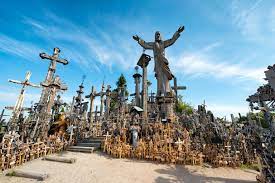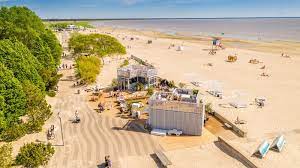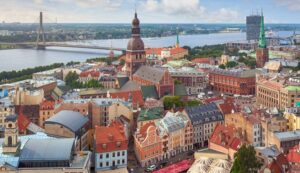



Remember Nansen project collaboration
We were delighted to collaborate in a project related to an outstanding person
Fridtjof Nansen (October 10, 1861-May 13, 1930) was born at Store Frøen, near Oslo. His father, a prosperous lawyer, was a religious man with a clear conception of personal duty and moral principle; his mother was a strongminded, athletic woman who introduced her children to outdoor life and encouraged them to develop physical skills. And Nansen’s athletic prowess was to prove of the utmost importance to his career. He became expert in skating, tumbling, and swimming, but it was his expertise in skiing that was to play such a large role in his life. Not massively built, Nansen was tall, supple, strong, hard. He possessed the physical endurance to ski fifty miles in a day and the psychological self-reliance to embark on long trips, with a minimum of gear and only his dog for company.
In school Nansen excelled in the sciences and in drawing and, upon entering the University of Oslo in 1881, decided to major in zoology. In the next fifteen years he united his athletic ability, his scientific interests, his yearning for adventure, and even his talent for drawing in a series of brilliant achievements that brought him international fame.
In 1882 he shipped on the sealer Viking to the east coast of Greenland. On this trip of four and a half months, the scientist in him made observations on seals and bears which, years later, he updated and turned into a book; but at the same time the adventurer became entranced by this world of sea and ice.
Obtaining the post of zoological curator at the Bergen Museum later that year, Nansen spent the next six years in intensive scientific study, punctuating his work with visits to some of the great laboratories on the Continent and once by an extraordinary trek across Norway from Bergen to Oslo and back on skis. In 1888 he successfully defended his dissertation on the central nervous system of certain lower vertebrates for the doctorate at the University of Oslo.
For a long time Nansen had been evolving a plan to cross Greenland, whose interior had never been explored. He decided to cross from the uninhabited east to the inhabited west; in other words, once his party was put ashore, there could be no retreat. In 1926, explaining his philosophy to the students at St. Andrews in his rectorial address, Nansen said that a line of retreat from a proposed action was a snare, that one should burn his boats behind him so that there is no choice but to go forward. The party of six survived temperatures of -45° C, climbed to 9,000 feet above sea level, mastered dangerous ice, exhaustion, and privation to emerge on the west coast early in October of 1888 after a trip of about two months, bringing with them important information about the interior.
In the next four years, Nansen served as curator of the Zootomical Institute at the University of Oslo, published several articles, two books, The First Crossing of Greenland (1890) and Eskimo Life (1891), and planned a scientific and exploratory foray into the Arctic. Basing his plan on the revolutionary theory that a current carried the polar ice from east to west, Nansen put his ship, the Fram [Forward], an immensely strong and cunningly designed ship, into the ice pack off Siberia on September 22, 1893, from which it emerged thirty-five months later on August 13, 1896, into open water near Spitzbergen. Nansen was not aboard.
Realizing that the ship would not pass over the North Pole, Nansen and one companion, with thirty days’ rations for twenty-eight dogs, three sledges, two kayaks, and a hundred days’ rations for themselves, had set out in March of 1895 on a 400-mile dash to the Pole. In twenty-three days they traveled 140 miles over oceans of tumbled ice, getting closer to the Pole than anyone had previously been. Turning back, they made their way southwest to Franz Josef Land, wintered there in 1895-1896, started south again in May, reached Vardo, Norway, the same day the Fram reached open water and were reunited with the crew on August 21 at Tromsø.
The voyage was a high adventure, but it was also a scientific expedition, the Fram serving as an oceanographic-meteorological-biological laboratory. Holding a research professorship at the University of Oslo after 1897, Nansen published six volumes of scientific observations made between 1893 and 1896. Continuing thereafter to break new ground in oceanic research, he was appointed professor of oceanography in 1908.
Nansen interrupted his research in 1905 to urge the independence of Norway from Sweden and, after the dissolution of the Union, served as his country’s minister to Great Britain until May of 1908. In the next few years he led several oceanographic expeditions into polar regions, but once the world was plunged into war in 1914 and exploration was halted, he became increasingly interested in international political affairs.
For almost a year in 1917-1918, as the head of a Norwegian delegation in Washington, D. C., Nansen negotiated an agreement for a relaxation of the Allied blockade to permit shipments of essential food. In 1919, he became president of the Norwegian Union for the League of Nations and at the Peace Conference in Paris was an influential lobbyist for the adoption of the League Covenant and for recognition of the rights of small nations. From 1920 until his death he was a delegate to the League from Norway.
In the spring of 1920, the League of Nations asked Nansen to undertake the task of repatriating the prisoners of war, many of them held in Russia. Moving with his customary boldness and ingenuity, and despite restricted funds, Nansen repatriated 450,000 prisoners in the next year and a half.
In June, 1921, the Council of the League, spurred by the International Red Cross and other organizations, instituted its High Commission for Refugees and asked Nansen to administer it. For the stateless refugees under his care Nansen invented the «Nansen Passport», a document of identification which was eventually recognized by fifty-two governments. In the nine-year life of this Office, Nansen ministered to hundreds of thousands of refugees – Russian, Turkish, Armenian, Assyrian, Assyro-Chaldean – utilizing the methods that were to become classic: custodial care, repatriation, rehabilitation, resettlement, emigration, integration.
The Red Cross in 1921 asked Nansen to take on yet a third humanitarian task, that of directing relief for millions of Russians dying in the famine of 1921-1922. Help for Russia, then suspect in the eyes of most of the Western nations, was hard to muster, but Nansen pursued his task with awesome energy. In the end he gathered and distributed enough supplies to save a staggering number of people, the figures quoted ranging from 7,000,000 to 22,000,000.
In 1922 at the request of the Greek government and with the approval of the League of Nations, Nansen tried to solve the problem of the Greek refugees who poured into their native land from their homes in Asia Minor after the Greek army had been defeated by the Turks. Nansen arranged an exchange of about 1,250,000 Greeks living on Turkish soil for about 500,000 Turks living in Greece, with appropriate indemnification and provisions for giving them the opportunity for a new start in life.
Nansen’s fifth great humanitarian effort, at the invitation of the League in 1925, was to save the remnants of the Armenian people from extinction. He drew up a political, industrial, and financial plan for creating a national home for the Armenians in Erivan that foreshadowed what the United Nations Technical Assistance Board and the International Bank of Development and Reconstruction have done in the post-World War II period. The League failed to implement the plan, but the Nansen International Office for Refugees later settled some 10,000 in Erivan and 40,000 in Syria and Lebanon.
Nansen died on May 13, 1930, and was buried on May 17, Norway’s Constitution Day.
(Fridtjof Nansen – Biographical. NobelPrize.org. Nobel Media AB 2020. Sun. 23 Aug 2020. https://www.nobelprize.org/prizes/peace/1922/nansen/biographical/ )
Meeting on Tuesday, 18 January 2022 at the Seaplane Harbor, Vesilennuki 6, Tallinn
We send two experts from EPL to celebrate the Estonian and Norwegian polar friendship, and the 100 years of diplomatic relations between Norway and Estonia.
Learning more about Nansen and his outstanding work!
Dissemination of Nansen project activities on the streets of Tallinn
EPL organized a group of volunteers to remember Nansen on the streets of Tallinn aiming to let regular citizens to know about Nansen and his amazing work!
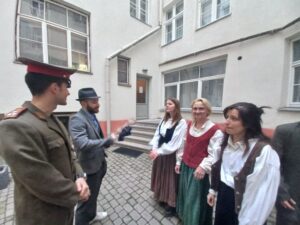

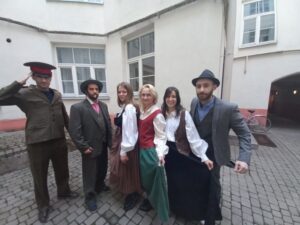
Trip to the European Union institutions
Our association collaborated with the European Union organizing a visit to Brussels and Luxembourg from 9th to 15th October 2022 visiting the European Parliament, the European Commission, the Court of Justice and other EU institutions.
Our aim, as a civil society organization, was to promote the idea of Europe among Estonians, and embrace the idea of common citizenship. Therefore, we selected participants according to their willingness to know more about Europe and the meaning of the EU.
Trip to Brussels and Luxembourg
9th – 15th October 2023
The purpose of this trip is to learn more about European institutions, including their history, their functioning and purpose. Also, to learn about the importance of the EU in your life today and in the future.
|
9th October Sunday |
Arrival day to Brussels, Belgium. |
|
10th October Monday |
Visit to the European Commission. Visit to the House of European History. Rest of the evening is free. |
|
11th October Tuesday |
Visit to the Parlamentarium and European Parliament in Brussels. Train from Brussels to Luxembourg. Rest of the evening is free. |
|
12th October Wednesday |
Visit to the European Court of Auditors. Visit to the Court of Justice. |
|
13th October Thursday |
Visit to the European Parliament in Luxembourg. |
|
14th October Friday |
Visit to the EUROSTAT. Visit to the Schuman House. |
|
15th October Saturday |
Leaving Luxembourg. |
Learn about the institutions
Before the trip, if you are not too familiar with the institutions, it would be preferable to read about them beforehand. This is to be able to understand more during the actual visits and preferably to ask questions.
European Commission
European Parliament and Parlamentarium
EUROSTAT
Court of Justice of European Union
Court of Auditors
House of European History
– Read more: https://historia-europa.ep.eu/en/mission-vision
House of Schuman
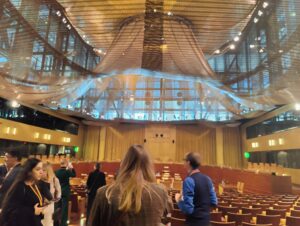
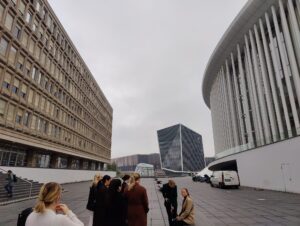

Remember BACHA
WE are delighted to communicate we are part of the consortium awarded by the European Union to organize the project Remember BACHA.
The project seeks to scientifically analyze the work of outstanding citizens in the fight against totalitarianism, as an example of Europeanism and intensive work for a better society, a memory of the fight for freedom and a balanced society.
The Baltic Way was a peaceful political demonstration that took place on August 23, 1989. Approximately two million people joined hands to form a human chain that spanned 675.5 kilometers (419.7 mi) in the three Baltic states: Estonia , Latvia and Lithuania, which were considered at the time to be constituent republics of the Soviet Union.
The demonstration originated from the “Black Belt Day” protests held in Western cities in the 1980s. It marked the 50th anniversary of the Molotov-Ribbentrop Pact between the Soviet Union and Nazi Germany. The pact and its secret protocols divided Eastern Europe into spheres of influence and led to the occupation of the Baltic states in 1940. The event was organized by Baltic civil society movements. The protest was designed to gain global attention by demonstrating a popular desire for independence and showing solidarity among the three nations. The event provided an opportunity for Baltic citizens to publicize the Soviet occupation and position the issue of Baltic independence not only as a political issue, but also as a moral issue. The Soviet authorities responded to the event with intense rhetoric, but did not take any constructive steps that could close the widening gap between the Baltic republics and the rest of the Soviet Union. After seven months of protest, Lithuania became the first Soviet republic to declare its independence.
After the Revolutions of 1989, August 23 has become an official commemoration day both in the Baltic countries, in the European Union and in other countries, known as Black Ribbon Day or as the European Day of Commemoration of the Victims of Stalinism and Nazism.
The project looks for opportunities for a debate on major European historical events beyond national perspectives. The scientific approach highlights the importance of working globally at the European level to solve problems that threaten democracy and freedom, understanding that the past helps foster a debate on how to address current problems in Europe. The analys how the Baltic society, organized under the leadership of emotional aspirations, tried to mitigate common problems and how it collided with the totalitarian regime impose by Soviet Union.
What Was the Baltic chain?
Three Baltic countries – Estonia, Latvia and Lithuania – demonstrated their solidarity in their quest for independence by forming a human chain on August 23, 1989. Approximately 2 million people joined their hands that day. The extraordinary event drew global attention and finally led to the Baltic States regaining their independence. The human chain spanning over 600 kilometers was registered in The Guinness Book of Records.
Baltic Way (Lithuanian: Baltijos kelias, Latvian: Baltijas ceļš, Estonian: Balti kett) or Baltic Chain (also “Chain of Freedom”). The demonstration originated in “Black Ribbon Day” protests held in the western cities in the 1980s. It marked the 50th anniversary of the Molotov–Ribbentrop Pact, in which Poland, Finland, Estonia, Latvia, Lithuania, and Romania were (as “spheres of influence”) divided between the Soviet Union and Nazi Germany. The Soviet-Nazi pact led to the outbreak of World War II in September 1939 and the Soviet invasion and occupation of the Baltic countries in June 1940.
The 1989 event was organised by the Baltic pro-independence movements: Rahvarinne of Estonia, the Tautas fronte of Latvia, and Sąjūdis of Lithuania, to draw global attention by demonstrating a popular desire for independence and showcasing solidarity among the three nations. It has been described as an effective publicity campaign, and an emotionally captivating and visually stunning scene.
The event presented an opportunity for the Baltic activists to publicise the Soviet rule and position the question of Baltic independence not only as a political matter, but also as a moral issue. The Soviet authorities responded to the event with intense rhetoric, but failed to take any constructive actions that could bridge the widening gap between the Baltic republics and the rest of the Soviet Union. Seven months after the protest Lithuania became the first Soviet republic to declare independence.
The 23 August 1939 Molotov-Ribbentrop Pact divided “the Baltic States (Finland, Estonia, Latvia, Lithuania)” into German and Soviet “spheres of influence” (German copy)
After the Revolutions of 1989, 23 August has become an official remembrance day both in the Baltic countries, in the European Union and in other countries, known as the Black Ribbon Day or as the European Day of Remembrance for Victims of Stalinism and Nazism.
EU- MERCOSUR digital Relations
EPL Speaker: Prof. Juan Carlos Persico, Gabriel Chapunov
Instituto de Relaciones Internacionales, Universidad de La Plata. Argentina.
Format: Online and onsite
Place: Tallinn, Estonia
Location: EPL
Date: 17/06/2023
Participants: 140
Abstract: The seminar “EU–MERCOSUR Digital Relations” explored the evolving dynamics between the European Union and the MERCOSUR bloc in the field of digital transformation, data governance, and technological cooperation. Organized within the framework of the DEFI Jean Monnet Chair at Tallinn University of Technology, the event brought together experts, students, and policymakers to examine how digital connectivity can act as a new pillar in interregional relations between Europe and Latin America.
Professors Juan Carlos Persico and Gabriel Chapunov from the Instituto de Relaciones Internacionales of the Universidad de La Plata (Argentina) offered a comparative and strategic analysis of the current state of EU–MERCOSUR relations, focusing on the digital agenda as an emerging area of integration. They discussed the potential of digital cooperation to complement traditional trade and political agreements, particularly in areas such as cybersecurity, digital infrastructure, e-commerce regulation, and cross-border data flows.
The seminar emphasised that while economic ties between both regions have traditionally centred on trade in goods, digital transformation offers new avenues for partnership based on shared values of openness, human rights, and sustainable development. The speakers highlighted the mutual interest in building trust-based digital ecosystems, encouraging regulatory harmonisation and technological interoperability that would strengthen transatlantic collaboration.
The hybrid format allowed broad participation, with over 140 attendees joining onsite at TalTech’s Law Department and online from Europe and Latin America. The discussion that followed underlined the need for knowledge transfer and capacity-building initiatives to reduce the digital divide between regions. Participants also reflected on the role of the European Union as a normative power in shaping global digital governance and how its experience could inspire institutional strengthening within MERCOSUR.
The event successfully fulfilled the objectives of the DEFI Chair by fostering academic exchange and interregional dialogue on digital policy and integration. It demonstrated the importance of transcontinental cooperation in addressing digital challenges and laid the foundation for future collaborative research and educational activities between TalTech and the Universidad de La Plata.

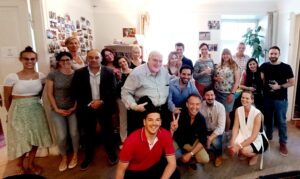

EPL coordinated the video of the project BACHA with our collaborators.
We are proud of the results
https://www.youtube.com/watch?v=C7Tf3IxCaTw
EPL participated in the BACHA trip to Strasbourg sending several participants from the Estonian society. Youth voices need to be heard and their problems address by the European institutions.
Photograph exhibitions BACHA
EPL team selected the photographs for the 24 photographs exhibitions related to BACHA project.
We selected the most relevant photographs according to their quality, historical impact and importance for the aims of the project. In addition, we printed them in high quality format and send it to all our partners in Europe.
https://rememberbacha.eu/project-implementation/photograph-exhibition/
EPL organizes Remember BACHA project trip
Have you ever wanted of seeing/exploring the magnificent Baltic States?
Now you have a once in a lifetime chance!
BACHA ADVENTURE TRIP.
We are happy to announce you our BACHA project trip.
8 people will enjoy a free trip to Lithuania, Latvia and Estonia from 7th to 17th August.
WE will remembrance the spirit of the Baltic Chain and how citizens changed peacefully history and aimed to join the European family.
• We will look for European Bison herds;
• We will discover the main cities of the Baltics, Vilnius, Kaunas, Riga, Parnu and Tallinn;
* Visit the Hill of crosses
• hike in amazing national parks and discover the beauty of the Baltic Forest;
• swimming at the Baltic Sea;
• visit a manor house from the XIX century;
• Spa;
• and more exciting activities.
Do you want to participate?
Please, like this Facebook post and share it before 1st of April. We will make a lottery for 8 people from all over Europe to enjoy this amazing opportunity remembering the outstanding people who thought solidarity is the real culture of human beings!
Please, visit our web for further information about the trip. https://rememberbacha.eu/
What is included?
What is not included?

